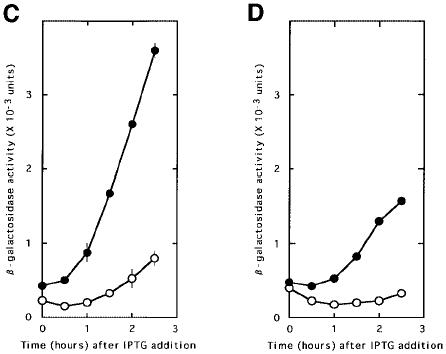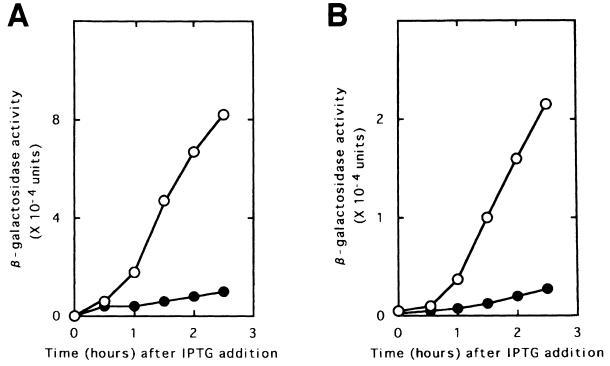
Fig. 3. RRF does not release ribosomes from the post-termination complex formed at UAAUG. Escherichia coli MC1061 (with the wild-type RRF, open circle) or LJ14 (with a temperature-sensitive RRF, closed circle) harbouring various plasmids as indicated below were grown at 27°C to an OD660 of 0.15. They were transferred to 39°C (non-permissive temperature for temperature-sensitive RRF) in the presence of IPTG (2 mM) for induction of reporter gene transcription (β-galactosidase, expressed as means ± SE shown by bars). (A) pL-7SD84Z, representing β-galactosidase synthesis with an added SD sequence without control by the coupling mechanism. (B) pL84Z, representing lysis gene synthesis through coupling. (C) pLAUG(–)86Z, representing lysis gene translation without the AUG of UAAUG expressed by the Z gene at 86 nucleotides downstream from UAA. (D) pLAUG(–)5Z, representing lysis gene translation without the AUG of UAAUG expressed by the Z gene at five nucleotides downstream from UAA. Note that the ratio of β-galactosidase in MC1061 to that in LJ14 of (A) was identical to that of (B). The reporter gene expression in LJ14 is more than that in MC1061 in (C) and (D), indicating the release of ribosomes from UAA by RRF with these constructs.

